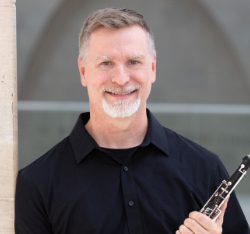
Photo credit: Sylvia Elzafon
COVID-19 has turned our world upside down. The Dallas Symphony Orchestra has been riding the COVID-19 rollercoaster along with every other arts organization in the world. Somehow we have found a way to continue performing music and engaging our audiences with music through the Internet and live, while still being paid. I think much of the credit should go to our CEO, Kim Noltemy, who came to the DSO in January 2018, from the position of Chief Operating and Communications Officer for the Boston Symphony Orchestra. With her experience there—including a temporary shutdown after the Boston Marathon bombing—and great leadership skills, she moved the DSO very quickly into the mindset of, “what can we do to stay engaged with our audience” and “how can we provide concerts while being safe.”
As most of the country went into shelter-in-place mode, one of the first things we were able to do was negotiate a one-year contract extension. Several months later we were asked to take a 10% cut across the board, which the musicians accepted to help the association.
Management and musicians also began brainstorming ways to accomplish the goal of engaging our audience. The musicians were asked to do this in several ways: by posting social media videos of all kinds; preparing concerts from home that the DSO could post on their page and social media sites; and calling donors to thank them for their support and to encourage them. Additionally, to reduce the financial burden on the association, DSO musicians took over the teaching of the students in our South Dallas Initiative. This program, which was started soon after Kim became CEO, introduces many kids who cannot afford lessons or instruments to instrumental music. Previously, the DSO had been paying highly qualified musicians not in the orchestra to teach these lessons.
We were chomping at the bit to do what we could. Many didn’t need to be asked and were already finding ways to perform collaboratively while staying safe and reaching out to audience members. One of my favorites is the “Special Delivery” concerts that began when weather permitted, in which small groups of musicians upon request would play outdoor concerts at someone’s home, masked and socially distanced. This became an opportunity to give the gift of music and create excitement.
There was also an opportunity during this time to provide food for some of our South Dallas Initiative kids who were no longer getting meals from their schools. Staff and musicians variously gave money, shopped for the food, created packages for each family, and delivered them every other week.
During this shelter-in-place time, the DSA also began developing a reentry plan for the musicians to return to the hall, working with a world-renowned epidemiologist at UT Southwestern to assure that when we began performing in June, all musicians would be as safe as possible. The reentry plan included COVID tests for anyone the day before each day that they would be at the hall for rehearsals or concerts, health questionnaires, temperature checks upon arrival, separate areas for each performer to unpack their instruments, special HVAC filters, deep cleaning, etc. Along with all of these precautions, management made it clear that everything was voluntary and anyone could opt out of anything they were uncomfortable doing, with no penalty or questions asked. Our concerts in June were chamber ensembles that were video recorded and offered online. These went beautifully and bolstered our confidence for the fall.
During what would have been our July and August break, many musicians continued producing online content and reaching out to donors and audience members. The DSO also received a donation that enabled us to have robotic cameras installed in the hall for our fall concerts and going forward.
The precautions used in June proved to be a success, and planning for the Fall season continued. It was crucial that we find a way to perform live safely for many reasons, not least of which was that this is the inaugural season of our fabulous new music director, Fabio Luisi. Using the same protocols, we have been able to perform concerts each week starting in September, although with smaller groups and modified programs. Our largest programs have included just over 50 musicians with soloists and conductor. We have used our Christmas stage extension for every concert, to give performers more room to spread out. Everyone is required to wear a mask. Winds, brass, and vocal soloists are allowed to take them off once in place on stage. We have plexiglass dividers that are available for all players who want them for protection from aerosols.
With no immediate end to COVID-19 in sight, the DSO is continuing to plan concerts through March that are modified to allow the musicians and our audience to socially distance while enjoying the experience of live music. Being able to do this has been a collaborative, creative effort between management and musicians.
Note: the author is the ICSOM delegate for the Dallas Symphony Orchestra.





